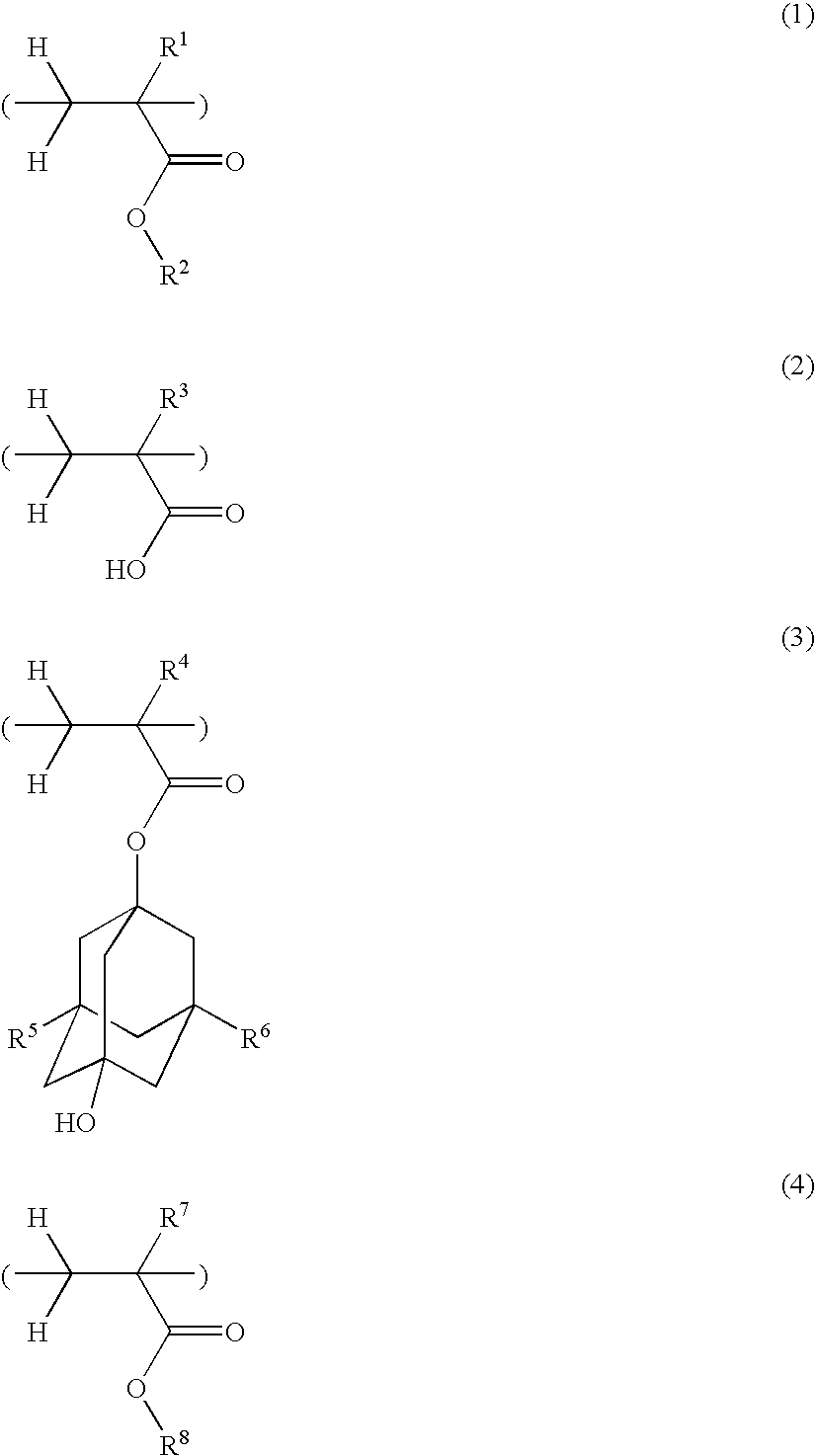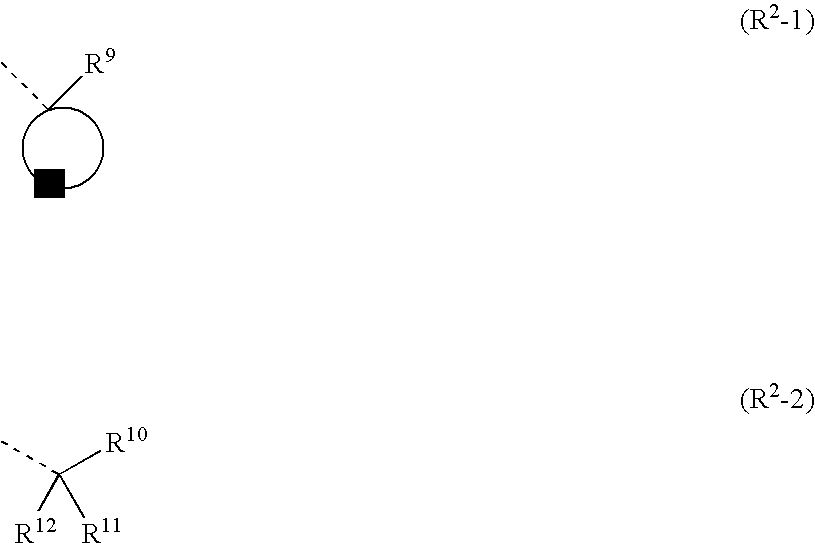Polymer, resist composition and patterning process
- Summary
- Abstract
- Description
- Claims
- Application Information
AI Technical Summary
Benefits of technology
Problems solved by technology
Method used
Image
Examples
synthesis example 1
Synthesis of Polymer 1
A mixture of 82.9 g of 2-methyl-2-adamantyl methacrylate, 10.2 g of methacrylic acid, 60.8 g of 3-hydroxy-1-adamantyl methacrylate, 96.2 g of 9-methoxycarbonyl-4-oxa-5-oxotricyclo[4.2.1.03,7]nonan-2-yl methacrylate, 0.84 g of 2-mercaptoethanol and 750 g of tetrahydrofuran was heated at 60° C. To the solution was added 5.28 g of 2,2′-azobisisobutyronitrile. The solution was stirred for 20 hours while keeping at 60° C. The reaction solution was cooled to room temperature, after which with vigorous stirring, it was added dropwise to 10 liters of hexane. The resulting solids were collected by filtration and dried in vacuum at 40° C. for 15 hours, obtaining a polymer (designated Polymer 1) in white powder solid form. The amount was 223.0 g and the yield was 89.2%. An integration ratio computed from a 1H-NMR spectrum indicated an approximate copolymer compositional ratio of 30 / 10 / 25 / 35. Polymer 1 had a Mw of 6,600.
synthesis examples 2-164
Synthesis of Polymers 2-164
Polymers 2 to 164 as shown in Tables 1 to 4 were synthesized by the same procedure as above or a well-known procedure. In Tables 1 to 4, the recurring units included in the copolymers are represented by the following abbreviations. That is, the recurring units of formula (1) are designated as (1A) to (1P), the recurring units of formula (2) are designated as (2A) and (2B), the recurring units of formula (3) are designated as (3A) to (3F), and the recurring units of formula (4) are designated as (4A) to (4P).
TABLE 1RecurringRecurringRecurringRecurringCompositionalPolymer No.unit (1)unit (2)unit (3)unit (4)ratioMwPolymer 11A2A3A4D30 / 10 / 25 / 356600Polymer 21A2A3A4H30 / 10 / 25 / 356500Polymer 31A2A3A4H50 / 10 / 20 / 206700Polymer 41B2A3A4D30 / 10 / 25 / 355600Polymer 51B2A3A4H30 / 10 / 25 / 355400Polymer 61B2A3A4H50 / 10 / 20 / 205000Polymer 71C2A3A4D30 / 10 / 25 / 357600Polymer 81C2A3A4H30 / 10 / 25 / 357500Polymer 91C2A3A4H50 / 10 / 20 / 207800Polymer 101D2A3A4H30 / 10 / 25 / 357000Polymer 111E2A3A4D30 / 10 / 2...
examples
Resist compositions were formulated using inventive polymers and examined for resolution.
PUM
| Property | Measurement | Unit |
|---|---|---|
| Fraction | aaaaa | aaaaa |
| Fraction | aaaaa | aaaaa |
| Nanoscale particle size | aaaaa | aaaaa |
Abstract
Description
Claims
Application Information
 Login to View More
Login to View More - R&D
- Intellectual Property
- Life Sciences
- Materials
- Tech Scout
- Unparalleled Data Quality
- Higher Quality Content
- 60% Fewer Hallucinations
Browse by: Latest US Patents, China's latest patents, Technical Efficacy Thesaurus, Application Domain, Technology Topic, Popular Technical Reports.
© 2025 PatSnap. All rights reserved.Legal|Privacy policy|Modern Slavery Act Transparency Statement|Sitemap|About US| Contact US: help@patsnap.com



